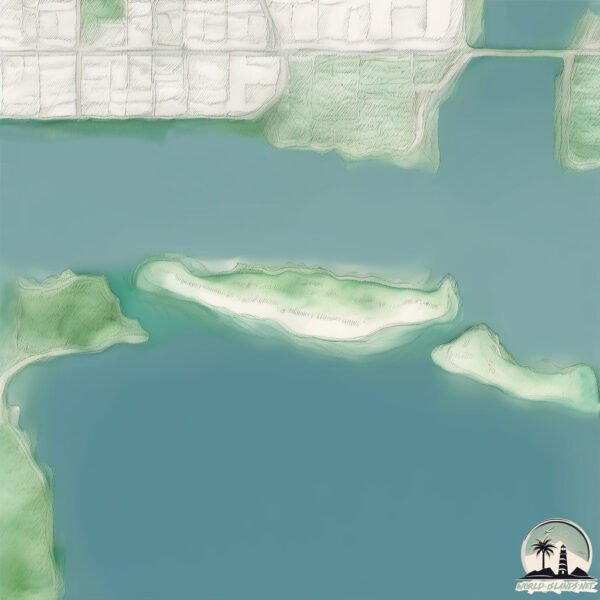Jinudo

Welcome to Jinudo, a Temperate island in the Japan Sea, part of the majestic Pacific Ocean. This guide offers a comprehensive overview of what makes Jinudo unique – from its geography and climate to its population, infrastructure, and beyond. Dive into the details:
- Geography and Size: Explore the island’s size and location.
- Climate and Weather: Weather patterns and temperature.
- Topography and Nature: Uncover the natural wonders of the island.
- Infrastructure and Travelling: Insights on reaching, staying, and making the most of your visit.
- News and Headlines: Latest News.
Geography and size of Jinudo
Size: 1.211 km²
Coastline: 6.5 km
Ocean: Pacific Ocean
Sea: Japan Sea
Continent: Asia
Jinudo is a Small Island spanning 1.2 km² with a coastline of 6.5 km.
Archipel: –
Tectonic Plate: Eurasia – One of the world’s largest tectonic plates, the Eurasian Plate covers a significant portion of Europe and Asia. It’s characterized by diverse geological features, including the Ural Mountains, the European Plain, and the Himalayas formed from its collision with the Indian Plate.
The geographic heart of the island is pinpointed at these coordinates:
Latitude: 35.06708333 / Longitude: 128.87303471
Climate and weather of Jinudo
Climate Zone: Temperate
Climate Details: Monsoon-Influenced Humid Subtropical Climate
Temperature: Hot Summer
Climate Characteristics: Known for hot, humid summers with significant monsoon rains, contrasted by mild, drier winters.
Topography and nature of Jinudo
Timezone: UTC+09:00
Timezone places: Asia/Tokyo
Max. Elevation: 6 m
Mean Elevation: -1 m
Vegetation: Sparse Vegetation
Tree Coverage: 78%
The mean elevation is -1 m. The highest elevation on the island reaches approximately 6 meters above sea level. The island is characterized by Plains: Flat, low-lying lands characterized by a maximum elevation of up to 200 meters. On islands, plains are typically coastal lowlands or central flat areas.
Dominating Vegetation: Sparse Vegetation
These regions have limited plant growth, typically due to extreme conditions like aridity or poor soils. Vegetation is scattered and consists of hardy plant species. Jinudo has a tree cover of 78 %.
Vegetation: 3 vegetation zones – Moderately Diverse Island
These islands start to show a broader range of ecological niches. With three vegetation zones, they may offer a mix of ecosystems like coastal areas, inland woods, and perhaps a distinct wetland or dry area. This diversity supports a wider range of flora and fauna, making these islands more ecologically complex than those with minimal diversity.
Infrastructure and Travelling to Jinudo
Does the island have a public airport? no.
There is no public and scheduled airport on Jinudo. The nearest airport is Gimhae International Airport, located 14 km away.
Does the island have a major port? no.
There are no major ports on Jinudo. The closest major port is PUSAN, approximately 17 km away.
The mean population of Jinudo is 301 per km². Jinudo is Moderately Inhabited. The island belongs to South Korea.
Continuing your journey, Koje To is the next notable island, situated merely km away.
South Korea is classified as Emerging region: MIKT: Mexico, Indonesia, South Korea, and Turkey – Economies recognized for their development potential and emerging market status. The level of income is High income: OECD.
News – Latest Updates and Headlines from Jinudo
Stay informed with the most recent news and important headlines from Jinudo. Here’s a roundup of the latest developments.
Please note: The data used here has been primarily extracted from satellite readings. Deviations from exact values may occur, particularly regarding the height of elevations and population density. Land area and coastline measurements refer to average values at mean high tide.
